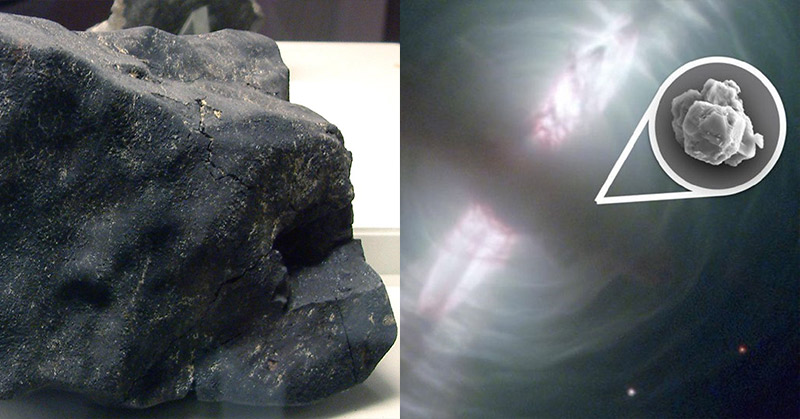This article was originally published on January 15th, 2020, and has since been updated.
The vast mysteriousness of our solar system has baffled and intrigued scientists for centuries. It has been the subject of many theories, myths, and legends, and has been fodder for thousands of books, comics, television shows and movies. Indeed, its mystery is what has made outer space the perfect backdrop against which our imaginations can run wild.
Despite studying it for hundreds of years, we still have many unanswered questions about our solar system- what goes on in it, where things come from, even how old it is.
Every so often, scientists make important discoveries that provide clues to some of these questions. Sometimes, these clues show up in the form of something huge, like a new star or a new planet, and sometimes they’re extremely small, like tiny particles of dust. Recently, scientists analyzing have discovered the oldest material known to exist on Earth- dust grains that are 7.5 billion years old [1].
What Are Presolar Grains?
The dust these scientists have been analyzing are known as presolar grains. These tiny particles are found in primitive meteorites that had condensed in the outflows of dead stars. This stardust is older than the Sun, which is why they’ve been given the name presolar grains [2].Presolar grains contain the original atoms of the stars in which they were formed, which can provide scientists with information about the earliest beginnings of our solar system [3].
The Murchison Meteorite
The stardust these scientists have discovered is from a meteorite that fell in Australia in 1969, called the Murchison meteorite. Researchers from the United States and Switzerland have managed to extract forty presolar grains from the rock and determine their age by measuring how long they’d been exposed to cosmic rays in space [1].
Cosmic rays are high-energy particles that move through space almost as fast as the speed of light [4]. These rays can penetrate solid matter, and can sometimes form new elements when they encounter these solid objects. The longer the object is exposed, the more of these new elements are formed [1].
“I compare this with putting out a bucket in a rainstorm. Assuming the rainfall is constant, the amount of water that accumulates in the bucket tells you how long it was exposed,” explained lead author Philipp Heck, a curator at Chicago’s Field Museum and associate professor at the University of Chicago [1].
If scientists can measure how many new elements are present, they can figure out how long the grain was exposed to cosmic rays, and thus determine how old it is [1].
The sun is 4.6 billion years old and the Earth is 4.5 billion. Using this analysis, the grains found in the Murchison Meteorite were mostly found to be 4.6-4.9 billion years old, however some of the grains were found to be 7.5 billion years old [1].
“Only 10% of the grains are older than 5.5 billion years, 60% of the grains are “young” (at) 4.6 to 4.9 billion years old, and the rest are in between the oldest and youngest ones.” said Dr. Heck [1].
He believes that there are probably pre-solar minerals in Murchison and other meteorites that are even older, they have just yet to be found [1].
What Can We Learn From Pre-Solar Grains?
These tiny grains can provide information about stellar evolution and nucleosynthesis, mixing processes in stars, galactic evolution of the elements, physical properties of stellar atmospheres, and conditions during solar system formation [2].
Understanding the formation of stars is important because stellar evolution is responsible for the for the production of most of the elements in our solar system, and stages in the life cycle of stars are an integral part in the formation of galaxies, new stars, and planetary systems [5].
These findings also help to answer the question as to whether or not new stars form at a steady rate, or whether there are highs and lows in star production.
“Thanks to these grains, we now have direct evidence for a period of enhanced star formation in our galaxy seven billion years ago with samples from meteorites. This is one of the key findings of our study,” said Dr Heck [1].
Unravelling the Mystery
While scientists still have thousands of questions regarding how our solar system was formed, these tiny dust particles have provided interesting insight into the mystery that is our solar system. As scientists and researchers uncover more ancient clues to our universe, we will hopefully be able to better understand how the Earth, sun, moon and stars came to be.
Sources
- https://www.bbc.com/news/science-environment-51099609
- https://www.researchgate.net/publication/284834662_Presolar_Grains
- https://nittler.dtm.carnegiescience.edu/research/presolar-grains-in-meteorites/what-can-we-learn-from-presolar-grains
- https://imagine.gsfc.nasa.gov/science/toolbox/cosmic_rays1.html
- https://umich.edu/~gs265/star.htm

